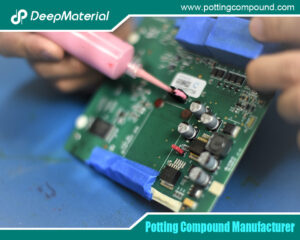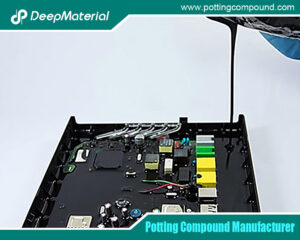
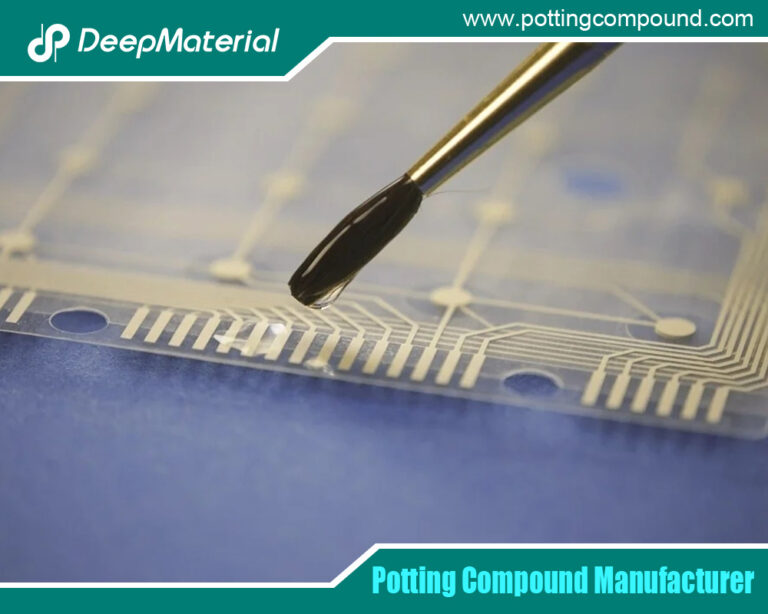
Understanding PCB Potting Compounds: Importance, Types, and Applications
- Electronic Potting Material Manufacturer
- July 2, 2024
- adhesive glue manufacturer, circuit board potting compound, Connector Potting Compound, electrical potting compound, electronic epoxy encapsulant potting compounds, electronic potting compound, Electronic Potting Compounds Manufacturer, Encapsulants and Potting Compounds Suppliers, epoxy potting compound, epoxy potting compound manufacturers, Flexible Potting Compound, industrial adhesive suppliers, LED Potting Compound, PCB Potting Compound, PCB potting compounds, polyurethane potting compound, polyurethane potting compound for electronics, Polyurethane Potting Compound Manufacturer, polyurethane potting compound manufacturers china, potting compound, potting compound for electronics, potting compound for pcb, potting compound vs epoxy, silicone potting compound for electronics, thermal potting compound, UV curing potting compound, waterproof potting compound
Understanding PCB Potting Compounds: Importance, Types, and Applications
Printed Circuit Boards (PCBs) are the heart of modern electronic devices, housing the complex circuits that make devices function. Protecting these delicate components from environmental damage is crucial for their longevity and reliability. This is where PCB potting compounds come into play. Potting compounds provide robust protection, enhancing the durability and performance of PCBs. This article will delve into the importance of PCB potting compounds, the different types available, and their various applications.
What is a PCB Potting Compound?
A PCB potting compound is a protective material applied to PCBs to shield them from environmental hazards such as moisture, dust, chemicals, and mechanical stress. These compounds encase the entire circuit board, forming a solid barrier to protect the components. Potting compounds are typically made from epoxy, polyurethane, silicone, or acrylic, each offering unique properties suited to different applications.
Importance of Potting Compounds for PCBs
Environmental Protection
One of the primary functions of potting compounds is to protect PCBs from environmental factors. Moisture, dust, and chemicals can cause corrosion and short circuits, leading to device failure. Potting compounds create an airtight seal around the PCB, preventing these elements from reaching the sensitive components.
Mechanical Stability
PCBs are often subjected to mechanical stresses such as vibrations and impacts. Potting compounds provide a cushioning effect, absorbing shocks and vibrations that could otherwise damage the delicate circuitry. This is particularly important in automotive, aerospace, and industrial applications where devices are exposed to harsh conditions.
Thermal Management
Heat dissipation is a critical aspect of PCB design. Potting compounds can aid thermal management by conducting heat away from sensitive components, preventing overheating. Some potting materials are designed with high thermal conductivity to enhance this cooling effect.
Electrical Insulation
Potting compounds also serve as electrical insulators, preventing electrical interference between components. This is crucial for maintaining the integrity of the circuit and ensuring the device operates as intended. Potting compounds help maintain optimal electrical performance by providing a consistent dielectric barrier.
Types of PCB Potting Compounds
Each type of potting compound offers distinct advantages and is suited to specific applications. The main types of potting compounds include:
Epoxy Compounds
Epoxy potting compounds are known for their excellent adhesion, chemical resistance, and mechanical strength. They provide robust protection against moisture and environmental contaminants. Epoxy compounds are commonly used in automotive and industrial applications where durability is paramount. However, they can be rigid, which may be better for flexible applications.
Polyurethane Compounds
Polyurethane potting compounds offer a good balance between flexibility and durability. They are highly resistant to chemicals, abrasion, and impact. Their flexibility makes them suitable for applications where the PCB may experience movement or thermal expansion. Polyurethanes are often used in consumer electronics and telecommunications equipment.
Silicone Compounds
Silicone potting compounds are highly flexible and offer excellent thermal stability, making them ideal for high-temperature applications. They provide good moisture resistance and electrical insulation. Silicones often occur in aerospace, automotive, and medical devices where temperature fluctuations occur.
Acrylic Compounds
Acrylic potting compounds are known for their ease of use and fast curing times. They offer good electrical insulation and environmental protection. Acrylics are often used in applications requiring quick turnaround, such as consumer electronics and lighting products.
Applications of PCB Potting Compounds
Potting compounds are used across various industries, each requiring specific properties to meet their unique demands. Here are some notable applications:
Automotive Industry
Electronic control units (ECUs), sensors, and lighting systems are subjected to extreme temperatures, vibrations, and chemical exposure in the automotive industry. Epoxy and silicone potting compounds are commonly used to protect these components, ensuring reliability and safety.
Aerospace Industry
Aerospace applications demand high-performance materials that can withstand extreme conditions. Silicone potting compounds are preferred due to their excellent thermal stability and flexibility. These compounds protect avionics and control systems from temperature fluctuations, vibration, and moisture.
Consumer Electronics
Consumer electronics, such as smartphones, tablets, and wearables, require protection from daily wear and tear. Polyurethane and acrylic potting compounds are often used due to their balance of flexibility, durability, and ease of application. These materials help extend the lifespan of devices by protecting them from moisture, dust, and mechanical impact.
Medical Devices
Medical devices, including diagnostic equipment and implants, must adhere to stringent safety and reliability standards. Silicone potting compounds are favored in this sector due to their biocompatibility, flexibility, and resistance to sterilization processes. They ensure that sensitive electronic components remain functional and safe for use in medical environments.
Industrial Equipment
Industrial equipment, such as control systems, sensors, and motors, operates in harsh environments. Epoxy and polyurethane potting compounds provide the necessary protection against moisture, chemicals, and mechanical stress, helping maintain the performance and longevity of industrial electronics.
Choosing the Right Potting Compound
Selecting the appropriate potting compound for a specific application involves considering several factors:
Environmental Conditions
The operating environment plays a crucial role in determining the suitable potting compound. Factors such as temperature range, exposure to moisture, chemicals, and mechanical stress must be considered. Silicone compounds are ideal for high-temperature applications, while epoxy compounds are suitable for chemically aggressive environments.
Mechanical Requirements
The mechanical properties of the potting compound, such as hardness, flexibility, and impact resistance, should match the application requirements. Flexible compounds like polyurethane are suitable for dynamic environments, whereas rigid compounds like epoxy are better for static applications.
Electrical Properties
The potting compound’s dielectric strength and insulation properties are critical for maintaining electrical integrity. Applications requiring high electrical insulation should opt for compounds with superior dielectric properties.
Thermal Management
Potting compounds with high thermal conductivity should be chosen for applications where heat dissipation is essential. This ensures that heat generated by electronic components is effectively dissipated, preventing overheating and enhancing performance.
Curing Time and Process
The curing time and process of the potting compound can impact production timelines. Fast-curing compounds like acrylics are suitable for applications requiring quick turnaround, while slower-curing compounds may be preferred for applications needing precise, controlled curing.
Conclusion
PCB potting compounds are indispensable in electronics, providing essential protection to ensure the longevity and reliability of devices. By safeguarding PCBs from environmental hazards, mechanical stress, and electrical interference, potting compounds play a crucial role in the performance of electronic devices across various industries. Understanding the different types of potting compounds and their specific applications allows engineers and manufacturers to make informed decisions, ensuring their products can withstand the challenges of their operating environments.
As technology advances, the demand for more sophisticated and reliable electronic devices will only grow, underscoring the importance of adequate PCB protection through potting compounds. Whether in the harsh conditions of the automotive and aerospace industries, the demanding environments of industrial equipment, or the everyday use of consumer electronics, PCB potting compounds will remain a key component in the quest for durable and high-performing electronic devices.
For more about understanding PCB potting compounds: importance, types, and applications, you can pay a visit to DeepMaterial at https://www.pottingcompound.com/ for more info.
Recent Posts
- The Development Trend and Future Prospects of Electrical Potting Compound in the Glue Industry
- The Conformal Coating for PCB Market Has Entered an Explosive Period: Key Drivers and Reports Detailed
- How Does Epoxy Encapsulated LED Work?
- Which Glues Are Suitable for Encapsulation of Electronic Products?
- What Are the Design Standards for the Glass Transition Temperature (Tg) and Tensile Modulus of Automotive Electronic Encapsulants Adhesives?
- Usage Methods of LED Potting Compounds: From Mixing to Curing – A Complete Step-by-Step Guide
- The Characteristics of Thermal Conductivity, Waterproofness and Shock Resistance of LED Potting Compounds
- Revealing the Wide Range of Application Scenarios of LED Potting Compounds
- In-Depth Analysis of Several Common LED Potting Glue Types
- A New Benchmark for Electronic Protection: Conformal Coating Process from Manual to Fully Automatic
Tags
Related Posts

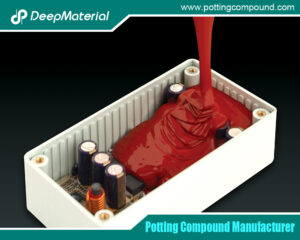
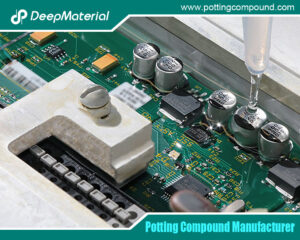
How Does Epoxy Encapsulated LED Work?
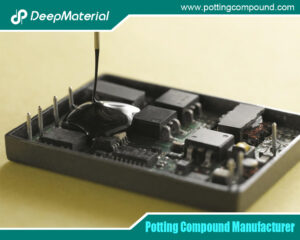
Which Glues Are Suitable for Encapsulation of Electronic Products?

